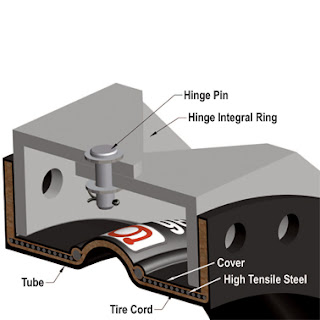 |
| Expansion joints accommodate the movement in piping systems due to a number of real world factors. Image courtesy General Rubber Corp. |
Process piping can have substantial stress applied due to thermal expansion of the piping material itself. This is especially evident when portions of the process piping are fixed in position by their mounting method. Allowances must be made for expansion of the piping material in the installed location. The design criteria will include factors that impact the expansion of the piping components, as well as the relationships between the piping and elements of their supporting structures. Expansion can produce substantial movement of pipe sections which must be accommodated by the supports and the piping itself.
One manufacturer, General Rubber Corp., manufactures a wide range of expansion joints for process piping systems of almost any size. Their expertise, acquired over many years in the field, is reflected in the numerous product variants available to meet every application condition.
Share your process piping challenges with product specialsts, leveraging your own knowledge and experience with their product application expertise to develop effective solutions.
